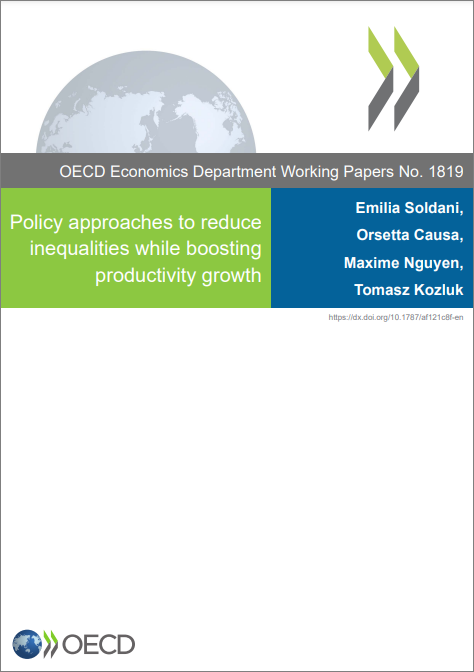
목차
Title page
Contents
Abstract/Résumé 4
Introduction: A critical conjuncture 6
Slow productivity growth and high inequality: stylised facts 6
Improving productivity and taming inequality: policy pillars 13
Unlocking skills development for all 14
Supporting inclusive, adaptive, and resilient labour markets 16
Boosting business dynamism and technology diffusion, curbing market power 19
Enhancing the effectiveness of taxes and transfers in reducing inequalities 21
International cooperation for an inclusive and sustainable globalisation 23
References 24
Figure 1. The slowdown in productivity growth and catch-up 8
Figure 2. The divergence in productivity dynamics across firms and the disconnect between productivity and average worker's pay 10
Figure 3. Real wages decreased due to inflation spikes but are regaining lost ground, especially in low-pay industries 11
Figure 4. Progress in income inequality reduction is slow and non-homogenous across countries 12
Figure 5. Students' performance has declined and the gap between advantaged and disadvantaged students has widened 13
Figure 6. NEET: young individuals not in employment nor in formal education or training 14
Figure 7. Gender gaps in labour market outcomes remain large 17
Figure 8. Informal work remains predominant in several emerging economies 18
Figure 9. Barriers to business entry remain high in many G20 economies 20
Figure 10. Redistribution through taxes and transfers varies widely across OECD countries, even for similar levels of pre-tax inequality and GDP per capita 22
해시태그
관련자료
AI 100자 요약·번역서비스
인공지능이 자동으로 요약·번역한 내용입니다.
Policy approaches to reduce inequalities while boosting productivity growth
(불평등을 줄이고 생산성 성장을 촉진하기 위한 정책 접근 방식)



